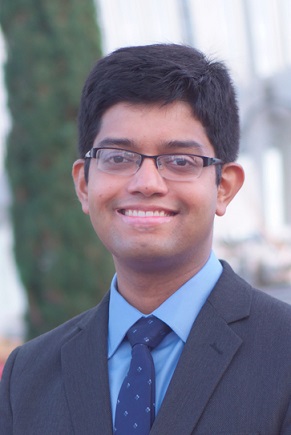
Speaker: Amartya Banerjee, Post-Doctoral Fellow
Affiliation: Computational Research Division, Lawrence Berkeley National Laboratory
Symmetry, deformations and the search for unprecedented materials from first principles
The mathematical framework of Objective Structures generalizes ideas associated with crystals to atomic/molecular configurations with non-periodic symmetries. Some of the most widely studied structures in materials science, biology and nano-technology can be described as objective structures. The list of objective structures includes nano-tubes, nano-ribbons, buckyballs, tail sheaths and capsids of viruses, many common proteins, graphene and phosphorene sheets as well as molecular bilayers. The presence of high degrees of symmetry in objective structures makes them likely to be associated with remarkable material properties (particularly, collective material properties such as ferromagnetism, ferroelectricity and superconductivity) and their departure from the bulk phase makes them likely to demonstrate such properties in manners that are otherwise unavailable in crystalline systems. A systematic study of objective structures is likely to lead to the discovery of unprecedented materials. At the same time, formulation and implementation of theoretical and computational methods specifically designed for studying objective structures, is likely to lead to the development of new simulation methodologies in nano-mechanics and materials science.
Following these lines of thought, we have been developing Objective Density Functional Theory (Objective DFT) – a suite of rigorously formulated quantum mechanical theories and numerical algorithms for carrying out abinitio simulation studies of objective structures. Objective DFT is intended to be a natural extension of the traditional Periodic Density Functional Theory method for studying crystalline systems, just as objective structures are a natural generalization of periodic structures. In this talk, I will describe some of the principal mathematical ideas and algorithmic techniques behind Objective DFT, as well as some of the key features and capabilities of this novel computational tool. Additionally, I will highlight how Objective DFT allows the non-periodic symmetries associated with objective structures to be exploited, to investigate non-uniform deformation modes in various nano-materials, from first principles.
Finally, I will discuss some of the applications that have sprouted from the development of Objective DFT. These include (but are not limited to) the use of the computational packages developed in this work to study the mechanical stability and optical properties of nano-clusters, nano-ribbons and nano-tubes (with potential applications to energy materials and nano-structured meta-materials), abinitio studies of the mechanical and electronic properties of nano-beams and nano-tubes, as well as the investigation of functional nano-materials with flexo-electric and ferroic properties (with potential applications to the development of novel acoustic sensors and miniature load bearing antennae, respectively).
About the Speaker
Amartya Banerjee is currently a post-doctoral fellow in the Computational Research Division of the Lawrence Berkeley National Laboratory. He received his bachelor‘s degree in Aerospace Engineering from the Indian Institute of Technology and his M.S. and Ph.D. degrees from the University of Minnesota. Dr. Banerjee has been a visiting researcher to the Hausdorff Research Institute for Mathematics at the University of Bonn in Germany. He has received several awards and travel grants including the prestigious John A. & Jane Dunning Copper Fellowship from the University of Minnesota and the US Junior Oberwolfach Fellowship. He has delivered invited talks at various prestigious institutions, organized several conference symposia and has served as a referee for several peer reviewed journals. Dr. Banerjee’s research interests lie in the development and usage of mathematical and computational tools for the characterization and informed discovery of novel nano-materials and nano-structures. He is particularly interested in first principles methods and their applications to the mechanics of materials to which end, he has designed and developed a suite of powerful computational packages. These tools have sprouted several novel applications, and are expected to lead to the discovery of unprecedented materials in the near future.
Date/Time:
Date(s) - Apr 26, 2018
1:15 pm - 2:30 pm
Location:
2101 Engineering V
420 Westwood Plaza Los Angeles CA 90095
